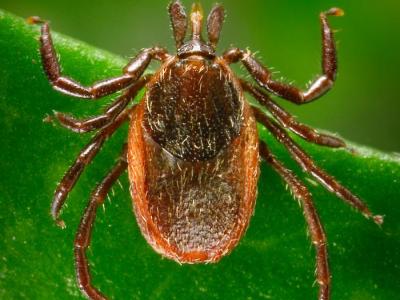Apr 22, 2009 (CIDRAP News) – Swine influenza viruses have never been documented as the cause of a human influenza pandemic, but in 1976 they generated pandemic fears strong enough to trigger a nationwide vaccination campaign.
The reporting of swine flu cases in two California children this week stirred memories of the 1976 episode, which caused major embarrassment for public health authorities when the pandemic never materialized.
The Centers for Disease Control and Prevention (CDC) announced yesterday that two children in southern California fell ill in late March with what turned out to be swine flu infections. Both of the children recovered, and neither was hospitalized.
But the cases raised concern because neither child had any known exposure to pigs, suggesting that human-to-human transmission might have occurred. Further, the virus was found to be a new strain of swine influenza A/H1N1 that differs substantially from human H1N1 strains. That suggested that much of the population could be susceptible to it and that the H1N1 antigen in seasonal flu vaccines probably would not protect people, the CDC said.
CDC and California officials offered little new information on the cases and investigation today. Officials are testing contacts of the two children, including four family members who also were recently sick, to see if they have antibodies indicating they were infected with the H1N1 virus. CDC spokesman Tom Skinner said it would be several days or possibly weeks before the results are available.
Human swine flu infections are rare but have become slightly more frequent in recent years, with 14 cases (including the two in California) since December 2005, according to the CDC. Almost always the infection has been associated with exposure to pigs, which are very commonly infected. Ken August, a spokesman for the California Department of Public Health, said today that until the two latest cases, no human cases of swine flu had been identified in California in several years.
Very rarely have people with swine flu infections been known to pass the infection to someone else. One such case occurred in Wisconsin in 1988, when a pregnant woman fell ill after visiting a swine exhibition, according to a CDC question-and-answer article on swine flu. She was hospitalized with pneumonia and died 8 days later. Follow-up studies suggested that "one to three" healthcare workers who had contact with her had mild flu-like illnesses and antibody evidence of swine flu infection.
Far better known is the swine flu episode of 1976. About 200 soldiers in basic training at Fort Dix in New Jersey fell ill in January and February, according to a 2006 article by Richard Krause, who was director of the National Institute of Allergy and Infectious Diseases at the time. At least four soldiers had pneumonia, and one died, according to the CDC article.
The virus was identified as an H1N1 swine flu virus, "thought to be a direct descendant of the virus that caused the pandemic of 1918," wrote Krause. "This conclusion was based on antibodies to H1N1 antigens found in survivors of the 1918 pandemic and the belief that the 1918 virus was eventually transmitted to pigs in the Midwest, where it persisted and caused sporadic human cases."
Public health experts, fearing a possible replay of the 1918 pandemic, engaged in an intense debate about how to respond. Eventually they launched a nationwide vaccination campaign, which was announced by President Gerald Ford in March. By the end of the year, 48 million people had been vaccinated, according to an account in Arthur Allen's book Vaccine: The Controversial Story of Medicine's Greatest Lifesaver.
But the feared pandemic never materialized. "The virus is thought to have circulated for a month and disappeared," the CDC article says. "The Fort Dix outbreak may have been an animal anomaly caused by introduction of an animal virus into a stressed human population in close contact in crowded facilities during the winter."
Not only did the pandemic fail to appear, but the vaccine apparently harmed some people. Health officials suspended the vaccination campaign on Dec 16, 1976, after receiving numerous reports of Guillian-Barre syndrome (GBS), a paralyzing neurologic illness, after vaccination, according to an August 1979 report in the American Journal of Epidemiology. Nationwide surveillance detected 1,098 patients with GBS onset from October 1976 through January 1977. Epidemiologic evidence suggested that many cases were related to vaccination, with an estimated risk of 1 case for every 100,000 vaccinations.
Studies of influenza vaccines used after 1976 showed no increased risk for GBS in adults except for borderline statistically significant increases in the 1992-93 and 1993-94 flu seasons, according a report in the Jul 15, 2008, issue of Journal of Infectious Diseases. However, experts still don't know what caused the GBS cases after the swine flu vaccination. One theory was that bacterial antigens from contaminated eggs used in vaccine production could have elicited GBS.
In any case, the episode left the public health establishment demoralized. "The debacle opened public health authorities to the kind of criticism and even ridicule that they had never had to countenance before," wrote Allen.
The concern stirred by this week's report of the two swine flu cases in California readily recalled the 1976 episode. But Marie Gramer, DVM, PhD, a University of Minnesota veterinarian who has studied swine flu, cautioned against drawing many parallels as yet.
"It's kind of too early for that," she said. "Certainly in 1976 what got people riled up was that it was adults getting sick. That was outside the norm. This [the California cases] affected children, and children get a lot of influenza."
She said she personally is not overly concerned about the latest cases. "But I think it's important to get this information out there and that people be aware that flu can be shared between humans and pigs," she added.
While influenza is notoriously unpredictable, there is no firm evidence of a swine flu virus having triggered a human flu pandemic, according to multiple reports. The virus that swept around the world in 1918 is believed to have been an avian strain that somehow adapted to humans. The two pandemics since then, in 1957-58 and 1968-69, resulted from genetic reassortment of avian and human strains, though the reassortment could have occurred in an intermediate host such as pigs. No good evidence is available for the many pandemics before 1918.
If by any chance the virus in the California proves capable of spreading from person to person, the existing seasonal flu vaccine will not be likely to protect people, even though the vaccine contains an H1N1 component, according to the CDC. "The H1N1 swine flu viruses are antigenically very different from human H1N1 viruses," the CDC article states.
Most of the flu viruses recently found in pigs have been H1N1 and H3N2 strains, the CDC says. Current swine flu H3N2 viruses are closely related to human H3N2 viruses, because they were introduced into pigs from humans in the late 1990s. But H1N1 swine viruses have been known to circulate in pigs at least since the 1930s.
The seasonal flu vaccine also includes an H3N2 component. Since the human and swine H3N2 strains are closely related, "the seasonal influenza vaccine will likely help provide partial protection against swine H3N2, but not swine H1N1 viruses," according to the CDC.
See also:
CDC questions and answers about swine flu
http://www.cdc.gov/flu/swine/key_facts.htm
Richard Krause EID article on the 1976 swine flu episode
http://www.cdc.gov/ncidod/EID/vol12no01/05-1132.htm
Aug 1979 Am J Epidemiol study abstract
Jul 15, 2008, J Infect Dis study abstract
http://www.journals.uchicago.edu/doi/abs/10.1086/589624
CDC guidance on infection control and antiviral treatment for patients with suspected swine flu infections
http://www.cdc.gov/flu/swine/recommendations.htm



















